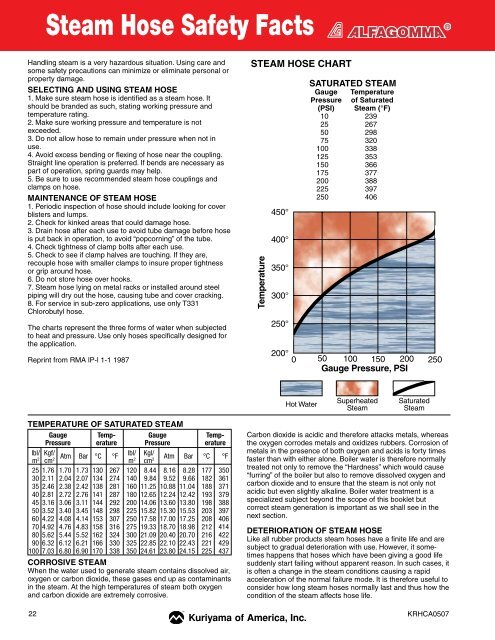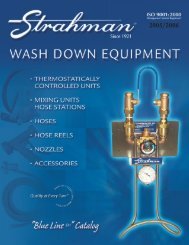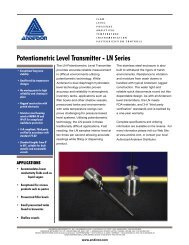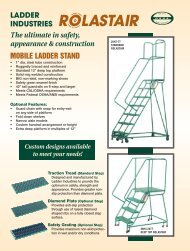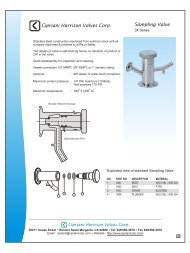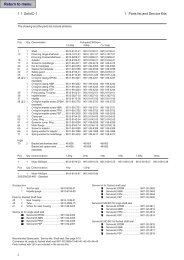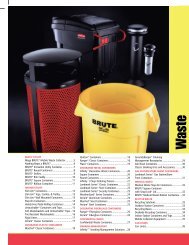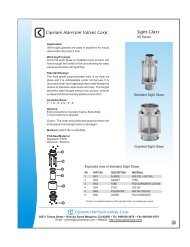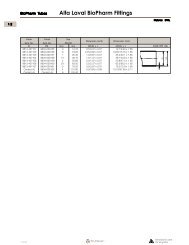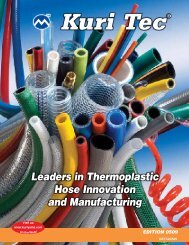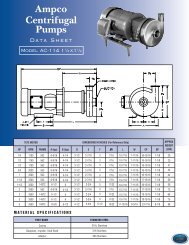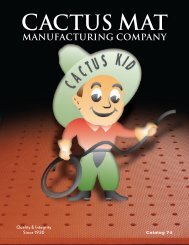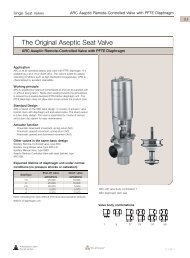Industrial Rubber Hose - Key Industrial
Industrial Rubber Hose - Key Industrial
Industrial Rubber Hose - Key Industrial
Create successful ePaper yourself
Turn your PDF publications into a flip-book with our unique Google optimized e-Paper software.
Steam <strong>Hose</strong> Safety Facts<br />
Handling steam is a very hazardous situation. Using care and<br />
some safety precautions can minimize or eliminate personal or<br />
property damage.<br />
SELECTING AND USING STEAM HOSE<br />
1. Make sure steam hose is identified as a steam hose. It<br />
should be branded as such, stating working pressure and<br />
temperature rating.<br />
2. Make sure working pressure and temperature is not<br />
exceeded.<br />
3. Do not allow hose to remain under pressure when not in<br />
use.<br />
4. Avoid excess bending or flexing of hose near the coupling.<br />
Straight line operation is preferred. If bends are necessary as<br />
part of operation, spring guards may help.<br />
5. Be sure to use recommended steam hose couplings and<br />
clamps on hose.<br />
MAINTENANCE OF STEAM HOSE<br />
1. Periodic inspection of hose should include looking for cover<br />
blisters and lumps.<br />
2. Check for kinked areas that could damage hose.<br />
3. Drain hose after each use to avoid tube damage before hose<br />
is put back in operation, to avoid “popcorning” of the tube.<br />
4. Check tightness of clamp bolts after each use.<br />
5. Check to see if clamp halves are touching. If they are,<br />
recouple hose with smaller clamps to insure proper tightness<br />
or grip around hose.<br />
6. Do not store hose over hooks.<br />
7. Steam hose lying on metal racks or installed around steel<br />
piping will dry out the hose, causing tube and cover cracking.<br />
8. For service in sub-zero applications, use only T331<br />
Chlorobutyl hose.<br />
The charts represent the three forms of water when subjected<br />
to heat and pressure. Use only hoses specifically designed for<br />
the application.<br />
Reprint from RMA lP-l 1-1 1987<br />
TEMPERATURE OF SATURATED STEAM<br />
Gauge Temp- Gauge Temp-<br />
Pressure erature Pressure erature<br />
lbl/ Kgf/<br />
Atm Bar °C °F<br />
lbl/ Kgl/<br />
Atm Bar °C °F<br />
m2 cm2 m2 cm2 25 1.76 1.70 1.73 130 267 120 8.44 8.16 8.28 177 350<br />
30 2.11 2.04 2.07 134 274 140 9.84 9.52 9.66 182 361<br />
35 2.46 2.38 2.42 138 281 160 11.25 10.88 11.04 188 371<br />
40 2.81 2.72 2.76 141 287 180 12.65 12.24 12.42 193 379<br />
45 3.16 3.06 3.11 144 292 200 14.06 13.60 13.80 198 388<br />
50 3.52 3.40 3.45 148 298 225 15.82 15.30 15.53 203 397<br />
60 4.22 4.08 4.14 153 307 250 17.58 17.00 17.25 208 406<br />
70 4.92 4.76 4.83 158 316 275 19.33 18.70 18.98 212 414<br />
80 5.62 5.44 5.52 162 324 300 21.09 20.40 20.70 216 422<br />
90 6.32 6.12 6.21 166 330 325 22.85 22.10 22.43 221 429<br />
100 7.03 6.80 6.90 170 338 350 24.61 23.80 24.15 225 437<br />
CORROSIVE STEAM<br />
When the water used to generate steam contains dissolved air,<br />
oxygen or carbon dioxide, these gases end up as contaminants<br />
in the steam. At the high temperatures of steam both oxygen<br />
STEAM HOSE CHART<br />
SATURATED STEAM<br />
Gauge Temperature<br />
Pressure of Saturated<br />
(PSI) Steam (°F)<br />
10 239<br />
25 267<br />
50 298<br />
75 320<br />
100 338<br />
125 353<br />
150 366<br />
175 377<br />
200 388<br />
225 397<br />
250 406<br />
Carbon dioxide is acidic and therefore attacks metals, whereas<br />
the oxygen corrodes metals and oxidizes rubbers. Corrosion of<br />
metals in the presence of both oxygen and acids is forty times<br />
faster than with either alone. Boiler water is therefore normally<br />
treated not only to remove the “Hardness” which would cause<br />
“furring” of the boiler but also to remove dissolved oxygen and<br />
carbon dioxide and to ensure that the steam is not only not<br />
acidic but even slightly alkaline. Boiler water treatment is a<br />
specialized subject beyond the scope of this booklet but<br />
correct steam generation is important as we shall see in the<br />
next section.<br />
DETERIORATION OF STEAM HOSE<br />
Like all rubber products steam hoses have a finite life and are<br />
subject to gradual deterioration with use. However, it sometimes<br />
happens that hoses which have been giving a good life<br />
suddenly start failing without apparent reason. In such cases, it<br />
is often a change in the steam conditions causing a rapid<br />
acceleration of the normal failure mode. It is therefore useful to<br />
consider how long steam hoses normally last and thus how the<br />
and carbon dioxide are extremely corrosive.<br />
BECAUSE WE CONTINUALLY EXAMINE WAYS TO IMPROVE OUR PRODUCTS, WE RESERVE condition THE RIGHT of the TO ALTER steam SPECIFICATIONS affects hose WITHOUT life. PRIOR NOTICE.<br />
22 KRHCA0109<br />
KRHCA0507


